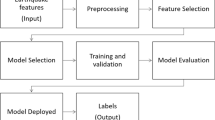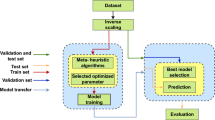Abstract
Data-driven deep learning application in earthquake engineering highlights the insufficient quantity and the imbalanced feature distribution of measured ground motions, which can be mitigated with artificial ones. Traditional ground motion generation techniques tend to extend the catalogs conditioning on existing records, while current deep learning-based methods such as generative adversarial networks (GANs) only provide limited duration or sampling rate, thus obstructing further applications. In this paper, an invertible time–frequency transformation process is employed, based on which the transformed earthquake representation is implicitly modeled by advanced GANs for high-resolution and unconditional generation. Moreover, leveraging the disentangling property of the GAN’s latent space, the newly developed latent space walking method is adopted to assure the generations with controllable time–frequency features. A feature-balanced generated ground motion dataset has been constructed in combination with the proposed methods, and the application potential was demonstrated through comparative experiments of different datasets.





















Similar content being viewed by others
Data Availability
The pre-trained models and codes will be available on GitHub at “https://github.com/xzk8559/StyleGAN-EQ” after the paper is published.
References
Abdal R, Qin Y, Wonka P (2019) Image2stylegan: how to embed images into the StyleGAN latent space. In: Proceedings of the IEEE/CVF International Conference On Computer Vision, pp 4432–4441
Ancheta TD, Darragh RB, Stewart JP et al (2014) NGA-West2 database. Earthq Spectra 3(30):989–1005
Bommer JJ, Martinez-Pereira A (1999) The effective duration of earthquake strong motion. J Earthq Eng 3(02):127–172
Bommer JJ, Stafford PJ, Alarcón JE (2009) Empirical equations for the prediction of the significant, bracketed, and uniform duration of earthquake ground motion. Bull Seismol Soc Am 99(6):3217–3233
Boore DM (2003) Phase derivatives and simulation of strong ground motions. Bull Seismol Soc Am 93(3):1132–1143
Council BSS (2003) NEHRP recommended provisions for seismic regulations for new buildings and other structures (FEMA 450). Washington, DC
Cui XZ, Hong HP (2021a) A time–frequency representation model for seismic ground motions. Bull Seismol Soc Am 111(2):839–856
Cui XZ, Hong HP (2021b) Simulating nonstationary and non-Gaussian vector ground motions with time-and frequency-dependent lagged coherence. Earthq Eng Struct Dynam 50(9):2421–2441
Cui XZ, Hong HP (2021c) A time-frequency dependent coherence model for seismic ground motions. Earthq Eng Struct Dynam 50(3):955–973
Ding Y, Peng Y, Li J (2020) Cluster analysis of earthquake ground-motion records and characteristic period of seismic response spectrum. J Earthq Eng 24(6):1012–1033
Esfahani RD, Cotton F, Ohrnberger M et al (2023) TFCGAN: Nonstationary ground-motion simulation in the time-frequency domain using conditional generative adversarial network (CGAN) and phase retrieval methods. Bull Seismol Soc Am 113(1):453–467
Florez MA, Caporale M, Buabthong P et al (2022) Data-driven synthesis of broadband earthquake ground motions using artificial intelligence. Bull Seismol Soc Am 112(4):1979–1996
Gao Y, Kong B, Mosalam KM (2019) Deep leaf-bootstrapping generative adversarial network for structural image data augmentation. Computer Aided Civil Infrastruct Eng 34(9):755–773
Gatti F, Clouteau D (2020) Towards blending physics-based numerical simulations and seismic databases using generative adversarial network. Comput Methods Appl Mech Eng 372:113421
Gatti F, Rosafalco L, Colombera G et al (2023) Multi-storey shear type buildings under earthquake loading: adversarial learning-based prediction of the transient dynamics and damage classification. Soil Dyn Earthq Eng 173:108141
Ghaboussi J, Lin CCJ (1998) New method of generating spectrum compatible accelerograms using neural networks. Earthq Eng Struct Dynam 27(4):377–396
Goodfellow I, Pouget-Abadie J, Mirza M et al (2014) Generative adversarial nets. Adv Neural Inf Process Syst 27:2672–2680
Granados GE, Miorelli R, Gatti F et al (2023) Towards a multi-fidelity deep learning framework for a fast and realistic generation of ultrasonic multi-modal total focusing method images in complex geometries. NDT E Int 139:102906
Griffin D, Lim J (1984) Signal estimation from modified short-time Fourier transform. IEEE Trans ASSP 32(2):236–243
He K, Zhang X, Ren S et al (2016) Deep residual learning for image recognition. In: Proceedings of the IEEE conference on computer vision and pattern recognition, pp 770–778
He K, Girshick R, Dollár P (2019) Rethinking ImageNet pre-training. In: Proceedings of the IEEE/CVF international conference on computer vision, pp 4918–4927
Heusel M, Ramsauer H, Unterthiner T et al (2017) GANs trained by a two time-scale update rule converge to a local Nash equilibrium. In: Proceedings of the 31st conference on neural information processing systems, Long Beach, CA
Housner GW (1956) Limit design of structures to resist earthquakes. In: 1st world conference on earthquake engineering, pp 1–13
Hsu TI, Bernard MC (1978) A random process for earthquake simulation. Earthq Eng Struct Dynam 6(4):347–362
Huang X, Belongie S (2017) Arbitrary style transfer in real-time with adaptive instance normalization. In: Proceedings of the IEEE international conference on computer vision, pp 1501–1510
Huerta-Lopez C I, Shin Y, Powers E J, et al (2000) Time-frequency analysis of earthquake records. In: 12th world conference on earthquake engineering, Auckland
Ji M, Liu L, Zhang R et al (2020) Discrimination of earthquake-induced building destruction from space using a pretrained CNN model. Appl Sci 10(2):602
Karras T, Laine S, Aila T (2019) A style-based generator architecture for generative adversarial networks. In: Proceedings of the IEEE/CVF conference on computer vision and pattern recognition, pp 4401–4410
Karras T, Aittala M, Laine S et al (2021) Alias-free generative adversarial networks. arXiv preprint:2106.12423
Karras T, Laine S, Aittala M et al (2020) Analyzing and improving the image quality of StyleGAN. In: Proceedings of the IEEE/CVF conference on computer vision and pattern recognition, pp 8110–8119
Kuwamura H, Kirino Y, Akiyama H (1994) Prediction of earthquake energy input from smoothed Fourier amplitude spectrum. Earthq Eng Struct Dynam 23(10):1125–1137
Li Y, Ku B, Zhang S et al (2020) Seismic Data augmentation based on conditional generative adversarial networks. Sensors 20(23):6850
Liao W, Chen X, Lu X et al (2021) Deep transfer learning and time-frequency characteristics-based identification method for structural seismic response. Front Built Environ 7(10):627058
Lin CCJ, Ghaboussi J (2001) Generating multiple spectrum compatible accelerograms using stochastic neural networks. Earthq Eng Struct Dynam 30(7):1021–1042
Lu X, Xu Y, Tian Y et al (2021) A deep learning approach to rapid regional post-event seismic damage assessment using time-frequency distributions of ground motions. Earthq Eng Struct Dynam 50(6):1612–1627
Mousavi SM, Zhu W, Ellsworth W et al (2019) Unsupervised clustering of seismic signals using deep convolutional autoencoders. IEEE Geosci Remote Sens Lett 16(11):1693–1697
National Research Institute for Earth Science and Disaster Resilience (2019) NIED K-NET, KiK-net. National Research Institute for Earth Science and Disaster Resilience
Perraudin N, Balazs P, Søndergaard PL (2013) A fast Griffin-Lim algorithm. In: IEEE workshop on applications of signal processing to audio and acoustics. IEEE, pp 1–4
Pousse G, Bonilla LF, Cotton F et al (2006) Nonstationary stochastic simulation of strong ground motion time histories including natural variability: application to the K-net Japanese database. Bull Seismol Soc Am 96(6):2103–2117
Priestley MB (1965) Evolutionary spectra and non-stationary processes. J Roy Stat Soc: Ser B (methodol) 27(2):204–229
Radosavovic I, Kosaraju R P, Girshick R et al (2020) Designing network design spaces. In: Proceedings of the IEEE/CVF conference on computer vision and pattern recognition, pp 10428–10436
Richardson E, Alaluf Y, Patashnik O et al (2021) Encoding in style: A StyleGAN encoder for image-to-image translation. In: Proceedings of the IEEE/CVF conference on computer vision and pattern recognition, pp 2287–2296
Rofooei FR, Mobarake A, Ahmadi G (2001) Generation of artificial earthquake records with a nonstationary Kanai-Tajimi model. Eng Struct 23(7):827–837
Ross ZE, Meier MA, Hauksson E (2018) P wave arrival picking and first-motion polarity determination with deep learning. J Geophys Res Solid Earth 123(6):5120–5129
Sabetta F, Pugliese A (1996) Estimation of response spectra and simulation of nonstationary earthquake ground motions. Bull Seismol Soc Am 86(2):337–352
Sabetta F, Pugliese A, Fiorentino G et al (2021) Simulation of non-stationary stochastic ground motions based on recent Italian earthquakes. Bull Earthq Eng 19(9):3287–3315
Shen Y, Gu J, Tang X et al (2020) Interpreting the latent space of GANs for semantic face editing, pp 9243–9252
Shi Y, Lavrentiadis G, Asimaki D et al (2023) Broadband ground motion synthesis via generative adversarial neural operators: development and validation. arXiv preprint:2309.03447
Skerry-Ryan R J, Battenberg E, Xiao Y et al (2018) Towards end-to-end prosody transfer for expressive speech synthesis with Tacotron. In: Proceedings of the international conference on machine learning. PMLR, pp 4693–4702
Snaebjornsson JT, Sigbjornsson R (2008) The duration characteristics of earthquake ground motions. In: 14th world conference on earthquake engineering, pp 12–17
Thaler D, Stoffel M, Markert B et al (2021) Machine-learning-enhanced tail end prediction of structural response statistics in earthquake engineering. Earthq Eng Struct Dynam 50(8):2098–2114
Van der Maaten L, Hinton G (2008) Visualizing data using t-SNE. J Mach Learn Res 9(11):2579–2605
Wang T, Zhang Z, Li Y (2019) EarthquakeGen: earthquake generator using generative adversarial networks. In: SEG technical program expanded abstracts, pp 2674–2678
Wang J, Fan L, Qian S et al (2002) Simulations of non-stationary frequency content and its importance to seismic assessment of structures. Earthq Eng Struct Dynam 31(4):993–1005
Xie Y, Ebad Sichani M, Padgett JE et al (2020) The promise of implementing machine learning in earthquake engineering: a state-of-the-art review. Earthq Spectra 36(4):1769–1801
Xu Z, Chen J, Shen J et al (2022) Recursive long short-term memory network for predicting nonlinear structural seismic response. Eng Struct 250:113406
Yamamoto Y, Baker JW (2013) Stochastic model for earthquake ground motion using wavelet packets. Bull Seismol Soc Am 103(6):3044–3056
Zhai X, Kolesnikov A, Houlsby N et al (2021) Scaling vision transformers. arXiv preprint:2106.04560
Zhang R, Chen Z, Chen S et al (2019) Deep long short-term memory networks for nonlinear structural seismic response prediction. Comput Struct 220:55–68
Funding
The authors acknowledge the financial support provided by the MOST, National Key Technology R&D Program (2023YFC3805800) and National Natural Science Foundation of China (52178151).
Author information
Authors and Affiliations
Contributions
Both authors contributed to the study conception, material preparation, and data collection. Analysis and the first draft of the manuscript were contributed by Zekun Xu. Both authors commented on previous versions of the manuscript. Both authors read and approved the final manuscript.
Corresponding author
Ethics declarations
Conflict of interests
The authors have no relevant financial or non-financial interests to disclose.
Additional information
Publisher's Note
Springer Nature remains neutral with regard to jurisdictional claims in published maps and institutional affiliations.
Rights and permissions
Springer Nature or its licensor (e.g. a society or other partner) holds exclusive rights to this article under a publishing agreement with the author(s) or other rightsholder(s); author self-archiving of the accepted manuscript version of this article is solely governed by the terms of such publishing agreement and applicable law.
About this article
Cite this article
Xu, Z., Chen, J. High-resolution ground motion generation with time–frequency representation. Bull Earthquake Eng (2024). https://doi.org/10.1007/s10518-024-01912-1
Received:
Accepted:
Published:
DOI: https://doi.org/10.1007/s10518-024-01912-1




